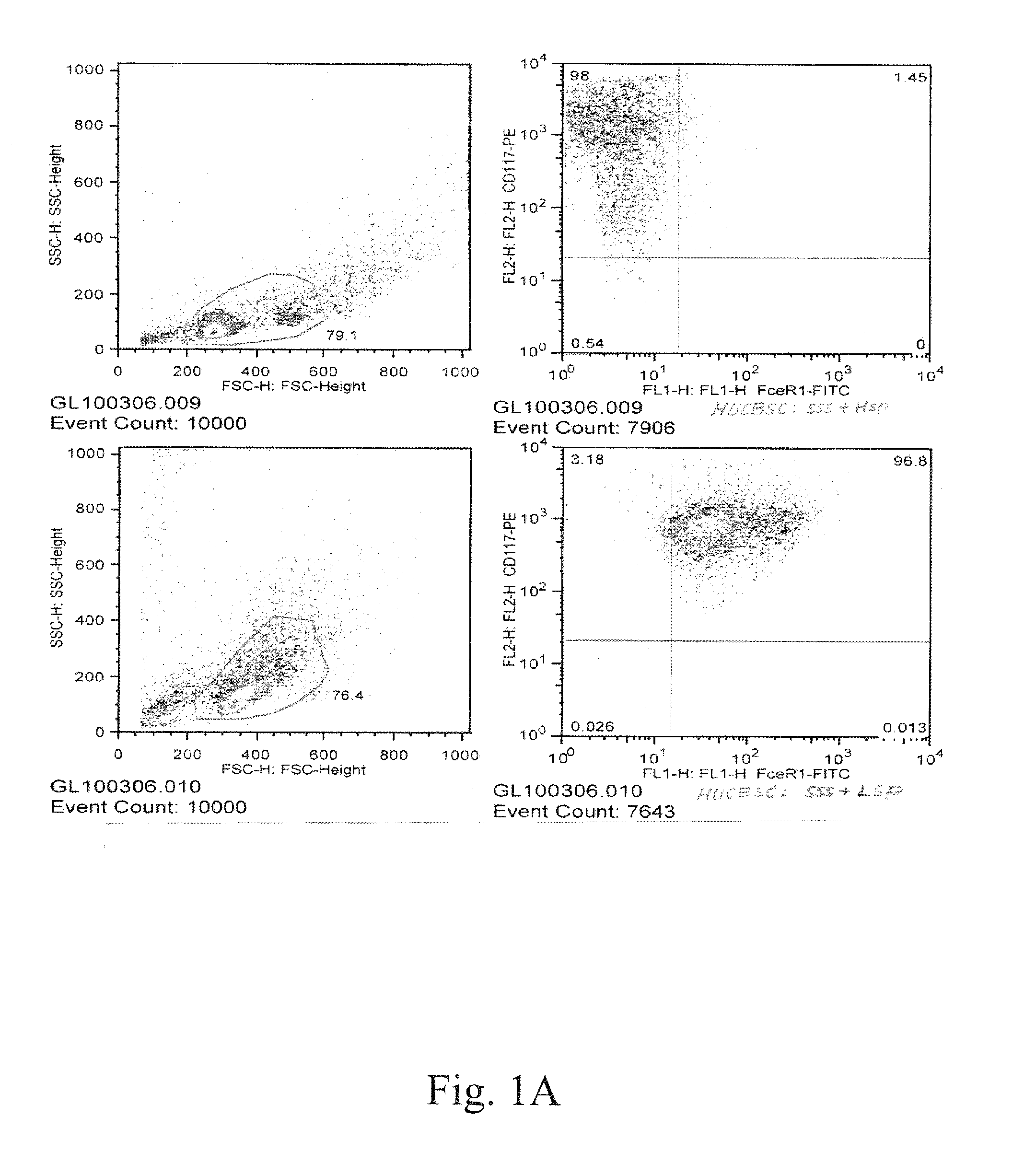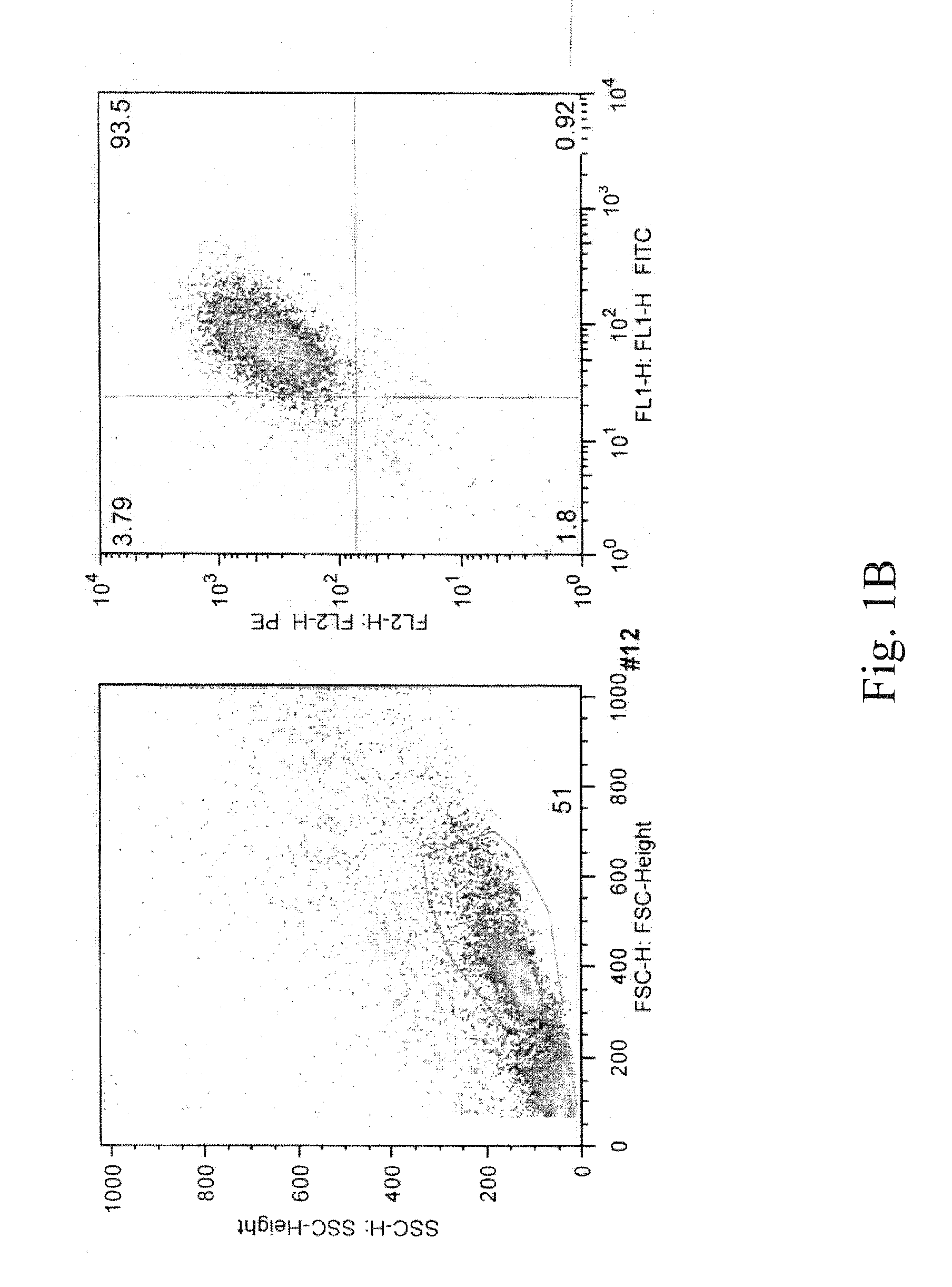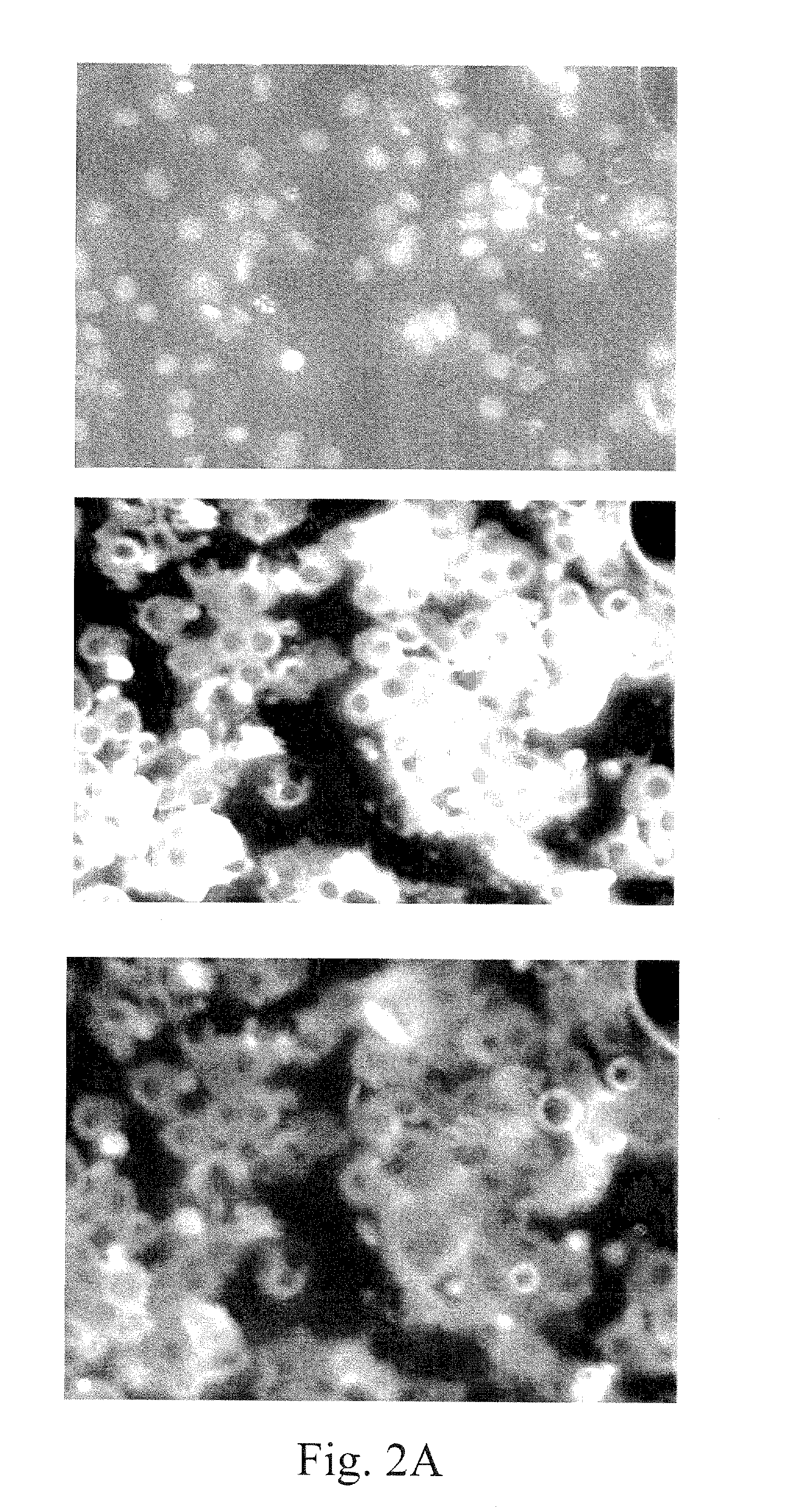Human mast cell line and uses thereof
a human mast cell and cell line technology, applied in the field of human mast cell lines, can solve the problems of inability to degranulate, inconsistent ability to degranulate, and limited human mast cell activation studies, etc., and achieve the effect of reducing the need for costly exogenous cytokines for maintaining the cultur
- Summary
- Abstract
- Description
- Claims
- Application Information
AI Technical Summary
Benefits of technology
Problems solved by technology
Method used
Image
Examples
example 1
Culture of Mast Cells from Human Cord Blood-Derived Hematopoietic Stem Cells
[0093]Hematopoietic stem cells were isolated from HUCB using CD133+ bead selection (Miltenyi Biotec). Purified cells were cultured in human stem cell factor (SCF), IL-6, and IL-3 for 14 days. After continued culture in SCF and IL-6 for 6 weeks, single cell cultures were established in 96-well plates using only culture medium and 2% fetal bovine serum (FBS). After 6 months, surviving colonies were examined for expression of mast cell-specific markers.
example 2
Cell Culture Conditions
[0094]The LAD2 is a highly differentiated cell human mast cell line derived from a patient diagnosed with mast cell sarcoma and was kindly provided by Dr. A. Kirshenbaum (National Institute of Health, Bethesda, Md.). LAD2 cells were cultured in StemPro-34 media (Gibco) supplemented with (2mM L-glutamine, 100 IU / ml penicillin, 50 ug / ml streptomycin, human recombinant stem cell factor 100 ng / ml) (PreProtech). Cell culture was performed at 5% CO2-95% air at 37° C. in a humidified atmosphere. For optimal growth, the cell density was maintained between 0.5×105 and 1×106 cells / ml. Average doubling time was 2-3 weeks.
[0095]The USF-MC1 mast cells were cultured in IMDM (GIBCO) medium supplemented with 2% Fetal bovine serum, 2 mM L-glutamine, 100 IU / ml penicillin, 50 ug / ml streptomycin. Cell culture was performed at 5% CO2-95% air at 37° C. in a humidified atmosphere. For optimal cell growth, the cell density was maintained between 0.5×10E5 and 1×106 cells / ml. Average ...
example 3
[0096]To demonstrate the expression of mast cell surface markers, LAD2 and USF-MC 1 mast cells were incubated with murine monoclonal antibody against CD117-PE (AbD Serotec) and FceR1 -FITC (eBioscience) for 30 minutes at 4° C. Double staining positive cells were analyzed by flow cytometry (FIG. 5A).
PUM
 Login to View More
Login to View More Abstract
Description
Claims
Application Information
 Login to View More
Login to View More - R&D
- Intellectual Property
- Life Sciences
- Materials
- Tech Scout
- Unparalleled Data Quality
- Higher Quality Content
- 60% Fewer Hallucinations
Browse by: Latest US Patents, China's latest patents, Technical Efficacy Thesaurus, Application Domain, Technology Topic, Popular Technical Reports.
© 2025 PatSnap. All rights reserved.Legal|Privacy policy|Modern Slavery Act Transparency Statement|Sitemap|About US| Contact US: help@patsnap.com



